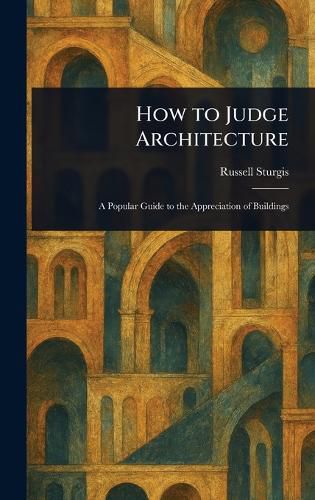Readings Newsletter
Become a Readings Member to make your shopping experience even easier.
Sign in or sign up for free!
You’re not far away from qualifying for FREE standard shipping within Australia
You’ve qualified for FREE standard shipping within Australia
The cart is loading…






This title is printed to order. This book may have been self-published. If so, we cannot guarantee the quality of the content. In the main most books will have gone through the editing process however some may not. We therefore suggest that you be aware of this before ordering this book. If in doubt check either the author or publisher’s details as we are unable to accept any returns unless they are faulty. Please contact us if you have any questions.
Unlock the secrets to understanding and appreciating the built world with Russell Sturgis's "How to Judge Architecture: a popular guide to the appreciation of buildings." This classic guide provides an accessible introduction to architectural history, styles, and design principles. Sturgis's work fosters building appreciation and teaches readers how to critically assess architectural merits. Explore various architectural forms and develop a discerning eye for the visual arts inherent in building design. Whether you're a student of architecture or simply curious about the structures that shape our environment, this book offers valuable insights. Delve into the fascinating subject of architecture through Sturgis's clear and engaging instruction. A timeless resource meticulously prepared for print republication, this volume remains an essential companion for anyone seeking a deeper understanding of architectural history and the art of design.
This work has been selected by scholars as being culturally important, and is part of the knowledge base of civilization as we know it.
This work is in the public domain in the United States of America, and possibly other nations. Within the United States, you may freely copy and distribute this work, as no entity (individual or corporate) has a copyright on the body of the work.
Scholars believe, and we concur, that this work is important enough to be preserved, reproduced, and made generally available to the public. We appreciate your support of the preservation process, and thank you for being an important part of keeping this knowledge alive and relevant.
$9.00 standard shipping within Australia
FREE standard shipping within Australia for orders over $100.00
Express & International shipping calculated at checkout
This title is printed to order. This book may have been self-published. If so, we cannot guarantee the quality of the content. In the main most books will have gone through the editing process however some may not. We therefore suggest that you be aware of this before ordering this book. If in doubt check either the author or publisher’s details as we are unable to accept any returns unless they are faulty. Please contact us if you have any questions.
Unlock the secrets to understanding and appreciating the built world with Russell Sturgis's "How to Judge Architecture: a popular guide to the appreciation of buildings." This classic guide provides an accessible introduction to architectural history, styles, and design principles. Sturgis's work fosters building appreciation and teaches readers how to critically assess architectural merits. Explore various architectural forms and develop a discerning eye for the visual arts inherent in building design. Whether you're a student of architecture or simply curious about the structures that shape our environment, this book offers valuable insights. Delve into the fascinating subject of architecture through Sturgis's clear and engaging instruction. A timeless resource meticulously prepared for print republication, this volume remains an essential companion for anyone seeking a deeper understanding of architectural history and the art of design.
This work has been selected by scholars as being culturally important, and is part of the knowledge base of civilization as we know it.
This work is in the public domain in the United States of America, and possibly other nations. Within the United States, you may freely copy and distribute this work, as no entity (individual or corporate) has a copyright on the body of the work.
Scholars believe, and we concur, that this work is important enough to be preserved, reproduced, and made generally available to the public. We appreciate your support of the preservation process, and thank you for being an important part of keeping this knowledge alive and relevant.